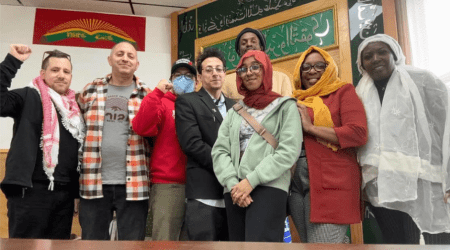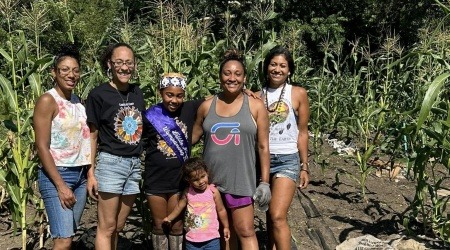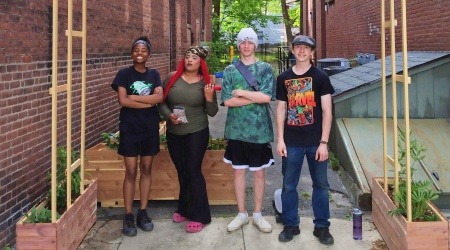What we mean by ‘Rooted Innovation’
Rooted Innovation focuses on reflecting, identifying and incorporating place-based, community context into the work. This requires pausing to reflect and take stock of the meaningful work and strengths that already exist within a community. By identifying what work, people, groups or resources are currently acting within their community, a group may be able to more successfully align their work with existing groups and identify unmet needs within the community.
With this Guiding Practice, groups are asked to consider how they perceive the landscape of needs and work being done in their community as a whole, and analyze where and how their work fits in. It is an opportunity to ensure that the work they are proposing to do is informed by the whole community, rather than a small group. This can be advantageous in building for redundancy and resilience, identifying needs gaps, and considering non-traditional partners or allies
How we see grassroots groups putting this into practice:
Groups understand the context and placement of their work within their local community.
This type of inventory assessment can help identify possible gaps in services or programs that are not offered, identify possible new partnerships and collaborations with non-traditional partners, or identify redundancies across the overlapping work of existing groups. Practices like asset mapping and power mapping can be helpful exercises here.
Groups take a collaborative approach to working with other groups.
Groups are working collaboratively with other existing groups - both those that are ‘natural partners,’ and those that may not be. There is no room for the ‘go it alone’ mentality in designing solutions. Nor do we find groups that are successful in this practice to be competitive with their neighboring groups.
Groups are working in direct response to identified community needs.
In the planning phase of a project, we often see groups hosting listening/visioning sessions or putting out surveys and polls to gather input from community members prior to any implementation. These can be helpful steps in defining the challenge, before even jumping to solutions. It helps to check a group’s assumptions of what the challenge is, and therefore strengthens the project solution they move towards.
For longer-term projects there can be more options of building in feedback and accountability to the community. Many are implementing some form of a community advisory board - a group composed of community stakeholders who are not core group members or decision makers. Members of this group can act as a sounding board to decisions or recommendations, weigh in with their own proposals, and act as liaisons to their community group.
Lastly, we find groups are conducting post-project evaluations. This type of feedback is important, but can be less significant if not also paired with the above modes of input.


